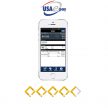
A Freelancer’s Guide To Getting Paid Online
The freelance sector is stronger than ever in the United States, with 35 percent of the workforce now working for themselves. However, if you’re new to freelancing or considering starting your own enterprise, getting paid online can be a bit of a minefield, so this article aims to guide you along the way.
Finding Clients & Building a Business
As a freelancer, the most obvious place to start is by setting up your own website. However, it will be some time before clients start to find you, which means you’ll have to reach out to potential customers. Depending on the sector you’re working in, an effective website marketing plan will focus on building traffic, but your marketing efforts might also include cold emailing, applying to job boards and being active on social media.
You also need to decide which type of clients you want to work for. To start with, agencies could be your best choice, especially if you are in the creative industry. Agencies can be a regular source of income when you first start out, helping you to gain experience and work examples to go in your portfolio.
Deciding Your Terms
Whether you’re a freelance designer, website builder or writer, it is recommended that you get a deposit upfront before you start work. The biggest concern for most freelancers is whether they will get paid for the work they put it, and the deposit provides some security. The amount you ask for will be influenced by the value of the project and its length, however most freelancers ask for a 50% deposit.
Alternatively, if you are seeking regular work with the same clients, you might want to look for retainers. This can help solve the common phenomenon of feast and famine, which most freelancers experience and a retainer can give you a steady, monthly income stream. When you secure a retainer client, you can set up a recurring invoice to collect payments.
Choose Your Payment Methods
The ability to accept credit cards is a must, however, not everybody has a credit card so you need to make it easy for them to pay, too. Here are some payment options to consider:
- A virtual terminal, or hosted payment page so your customers can pay securely.
- If your marketing is going to involve actively going out to seek clients, then mobile payments will allow you to collect payments and print receipts.
- PayPal payments for clients who don’t like to give out their card details, but remember a lot of people don’t have a PayPal account.
- ACH payments, or even checks.
However, whichever type of payment you accept, make sure they work for you and for your clients.
Contracts & Terms
The easiest way to prevent disputes is to have a contract in place before you start work. However, depending on the scale of the project, it won’t always be practical to get a lawyer to draw up a contract before you begin so many freelancers depend on templates, which they adapt as needed, or seek legal advice on what should be in your contract.
At the very least your contract should include the scope of the work, milestones, agreed price and deadlines. Some freelancers also set out their policies on revisions, liabilities and intellectual property rights. For instance, many freelancers will only pass on the intellectual property rights for the website design or written work once payment has been made in full.
On your website, have a terms and conditions page. Here, you should detail when you expect payments to be made (for example, due within 14 days) and whether late fees will apply if invoices aren’t paid on time. If you’re not sure how to set up your terms and conditions, you will find plenty of templates online.
Invoicing Clients
Businesses make a surprising number of mistakes when invoicing clients; this can result in a payment delays or missed payments. If you are invoicing a client include the following information as a minimum:
- The hours worked/quantities supplied.
- The total, including VAT and taxes and any discounts.
- Your contact details and those of your client.
- Dates and reference numbers/invoice number/bank details, if accepting transfers and any work numbers or SWIFT codes, if needed.
- Your address and the client address.
- Invoice number.
- Company name.
To make invoicing easier, use templates software like QuickBooks. If you struggle with organization, consider using a project management software. This will allow you to manage all aspects of a project and can help you to communicate more effectively with clients while the work is underway.
Chasing Late Payments
There will be a time in every freelancer’s life when a payment is late for some reason, and although chasing them up can be stressful, you’re far from alone. Sometimes it might be due to an invoice going to the wrong person, or it could be a mistake you made on the invoice itself. However, some clients are just late payers and all they need is a gentle reminder.
Always detail payment due times on your website, on your invoices, and on your reminders; get into the habit of sending reminders out before the invoice becomes due.
If a payment does become overdue, try and speak to the client directly to find out what has gone wrong. It might just have been a mix up, or they might need longer to pay, and you can agree terms. However, if they won’t respond to emails or phone calls, the only option might be to go to a collections agency or to the Small Claims Court.
Conclusion
Millions of us are enjoying the freedom of working for ourselves, however, one of the biggest problem areas for businesses is getting paid on time and deciding the best way to get paid online.
However, by providing easy ways for your customers to pay you that suit your business and give your customers a variety of options, invoicing quickly and correctly, and having firm guidelines on late payments, you can reduce some of these difficulties.
Ready to get started?
Get in touch or create an account





